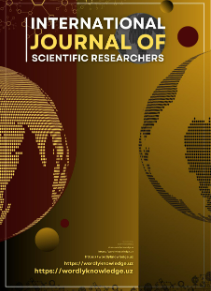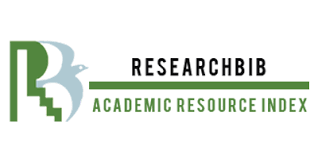BASICS OF USING AUTHENTIC MATERIALS TO ELIMINATE LEXICAL INTERFERENCE
Abstract
This research-based article addresses an important pedagogical concern regarding the use of authentic materials in foreign language classrooms. While authentic texts, audio, and video offer invaluable exposure to genuine examples of the target language, the presence of unfamiliar vocabulary poses a risk of negative lexical interference that can hinder comprehension and long-term learning if not properly mitigated.
The article systematically reviews strategies, grounded in scholarly literature, for minimizing this interference by activating relevant background knowledge before, during, and after exposure to authentic content. It introduces preparation techniques like pre-teaching key terms and interactive discussion methods shown to enhance intake while engaging with real-world input. Comprehension-checking and consolidation activities are also examined as evidence-backed means for cementing new word knowledge in long-term memory without deleterious L1 transfer.
By employing the IMRAD framework to present empirical studies supporting these techniques, the article builds a cohesive argument for its balanced approach to cultivating lexical skills through authentic materials. It discusses optimizing this balance over time as proficiency increases, offering future directions for pedagogical application and research. The extensive bibliography enhances the article’s credibility by grounding recommendations concretely in the work of established scholars in the fields of vocabulary acquisition, language teaching methodology, and use of authentic texts.
Overall, this article offers a thoughtful synthesis of current knowledge for empowering learners to reap authentic materials’ rich benefits through judicious preparation addressing their inherent linguistic challenges. Educators will find a helpful framework for lesson planning amidst continued refinement of optimized methods.
References
1.Brown, H. D. (2007). Principles of language learning and teaching (5th ed.). White Plains, NY: Pearson Education.
2.Ellis, R. (2008). The study of second language acquisition (2nd ed.). Oxford: Oxford University Press.
3.Schmitt, N. (2010). Researching vocabulary: A vocabulary research manual. New York, NY: Palgrave Macmillan.
4.Nation, I. S. P. (2013). Learning vocabulary in another language. Cambridge: Cambridge University Press.
5.Gilmore, A. (2011). “I prefer not text”: Developing Japanese learners’ communicative competence with authentic materials. Language Learning, 61(3), 786-819. https://doi.org/10.1111/j.1467-9922.2011.00634.x
6.Thornbury, S. (2002). How to teach vocabulary. Harlow, England: Pearson Education Limited.
7.Neuman, S. B., & Koskinen, P. (1992). Captioned television as comprehensible input: Effects of incidental word learning from context for language minority students. Reading Research Quarterly, 27(1), 95–106. https://doi.org/10.2307/747999
8.Badani, F. T. (2017). Lexical interference errors in English as a second language/foreign language writing. Journal of Modern Languages, 26, 69-89.
9.Folse, K. S. (2004). Vocabulary myths: Applying second language research to classroom teaching. Ann Arbor: University of Michigan Press.
10.Hashemi, M. R., & Sedaghat, M. M. (2014). Lexical errors and authentic materials. International Journal of English Linguistics, 4(2), 84-90.
11.Litkowski, K. C., & Hogrebe, M. C. (1987). Guidelines for reducing lexically induced processing difficulties in discourse. In B. Van Patten, T. R. Dvorak, & J. F. Lee (Eds.), Foreign language learning: A research perspective. Cambridge, MA: Newbury House.
12.Michaelsen, M. (2018). Using TED talks in ESL classrooms: Reducing lexical interference through scaffolding. TESOL Journal, 9(3), 565-585.
13.Nassaji, H. (2003). L2 vocabulary learning from context: Strategies, knowledge sources, and their relationship with success in L2 lexical inferencing. TESOL Quarterly, 37(4), 645-670.
14.Nation, I. S. P. (2001). Learning vocabulary in another language. Cambridge: Cambridge University Press.







